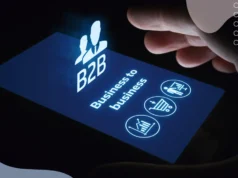
In the thrilling journey of invention, every creator needs a robust set of tools. Welcome to the Inventor’s Toolbox, an essential kit designed to take you from the spark of an idea to a patented, market-ready innovation. Preparing well and protecting your intellectual property through patenting are foundational steps for success.
It’s not just about having a great idea—it’s about the grit to see it through, the creativity to make it unique, and the wisdom to safeguard it. So, let’s unlock the inventor’s toolbox and see what’s inside.
Cultivating Creativity and Problem-Solving Skills
Creativity fuels invention. It is the engine that powers the imagination, allowing inventors to dream up solutions that others can’t see. Enhancing creativity often involves cultivating curiosity—ask questions, seek out new experiences, and never stop learning. Additionally, embracing failure as a part of the process can unlock innovative solutions.
Remember, most breakthroughs emerge from a series of mistakes. Problem-solving skills, on the other hand, complement creativity. They help transform abstract ideas into tangible products.
Improve your problem-solving skills by tackling challenges in diverse fields, engaging in brainstorming sessions, and using analytical tools such as SWOT analysis or decision trees. In essence, creativity brings the idea to life, and problem-solving refines it into an invention.

Conducting Market Research
An invention with no market demand is like a tree falling in the forest with no one around. To ensure your invention will resonate with consumers, conduct thorough market research. Start by identifying your target audience, understanding their needs, and studying their behavior. Investigate existing solutions—what are their strengths and weaknesses?
Can your invention add value or offer a better solution? Use tools such as surveys, interviews, and focus groups to gather information. Public databases, market reports, and competitor analysis can also yield valuable insights.
By understanding the landscape, you’re not only validating your invention idea, but also shaping it to meet real-world needs.
Idea Generation and Concept Development
Brimming with creativity and equipped with market knowledge, you’re ready to generate new ideas. Remember, idea generation is a process. Use brainstorming, mind-mapping, or SCAMPER techniques to unlock a flood of ideas. Once you’ve landed on a promising idea, it’s time to develop the concept.
Consider various facets of the invention—its functionality, design, materials, cost-effectiveness, and user experience. Use iterative design processes, continually refining and improving the concept based on feedback and testing.
Remember, it’s not just about creating something new, or seeing how it is supposed to look at InventHelp, but about creating something better.

Documenting Your Invention
In the world of patents, if it’s not documented, it doesn’t exist. Documenting your invention establishes the timeline of your idea and offers proof of your work. Record every step—initial sketches, design refinements, prototypes, and test results.
Include detailed descriptions and diagrams. Maintain a dated inventor’s journal, and consider recording video demonstrations of your prototype. Remember, this documentation might serve as crucial evidence in proving your invention’s uniqueness and your claim to it, especially in a copyright dispute.
Performing a Patent Search
Before applying for a patent, it’s crucial to verify that your idea is indeed unique. Patent databases like the USPTO or Google Patents can be used to search for existing ones. The goal is to find “prior art”—inventions that are similar to yours.
This helps determine if your idea is novel enough to warrant a patent. Don’t be disheartened if you find something similar; it’s an opportunity to refine your invention to distinguish it from existing solutions.

Patentability Assessment
To be patentable, your invention must meet three criteria: novelty (it’s new), non-obviousness (it’s not an obvious modification of existing inventions), and utility (it’s useful). Evaluating these factors requires a critical look at your invention in light of prior art.
Ask yourself, “Does my invention offer something new? Is the change significant enough that it’s not obvious? Does it have practical applications?” This introspective assessment can be challenging, but it’s vital to ensure your invention stands up to patent examination.
Seeking Legal Advice
Navigating the patenting labyrinth requires legal expertise. Patent attorneys or agents can provide invaluable guidance, helping you draft your application, respond to office actions, and protect your rights. They understand the legal intricacies and can advise on patent strategy, including international protection if applicable.
Remember, obtaining one isn’t just a bureaucratic process; it’s a legal one. Hence, investing in professional advice can protect your invention and your interests in the long run.

Drafting a Patent Application
A patent application is more than a form—it’s a strategic document that carefully defines your invention. It comprises several key components, including claims (the legal boundaries of your invention), specification (a detailed description), and drawings.
When drafting, describe your invention comprehensively, ensuring you cover all aspects that contribute to its novelty and usefulness. Precise language is critical. Poorly defined or overly broad claims can lead to rejection or a weak patent. Seek professional help to draft a robust application that maximizes your overall protection.
Filing Strategies: Provisional vs. Non-Provisional Applications
Choosing the right filing strategy is a critical decision. Provisional applications are simpler, less expensive, and grant you a filing date, but they don’t lead to a patent unless followed by a non-provisional application within 12 months. Non-provisional applications are more complex and costly but start the examination process.
The choice depends on your readiness, resources, and strategy. A provisional application can buy time for further development or market testing, while a non-provisional application can speed up patent grant.

Understanding Examination and Office Actions
Once filed, your application undergoes a thorough examination by a patent examiner. This can result in “office actions,” official communications often citing objections or rejections. Common issues include lack of novelty, non-obviousness, or unclear claims.
It’s essential to respond effectively, providing arguments or amendments to address the examiner’s concerns. Treat office actions not as setbacks, but as opportunities to strengthen your product.
Maintenance and Commercialization
Patent maintenance is key to protecting your invention long-term. In most countries, periodic maintenance fees are required to keep your patent in force. Beyond maintenance, consider how to profit from your patent.
You might manufacture and sell the product yourself, or license the patent to others. Each route offers unique opportunities and challenges. Remember, a patent is not just a badge of honor—it’s a tool to drive commercial success.

Conclusion
Inventing is a journey, filled with trials, triumphs, and transformation. The inventor’s toolbox, packed with creativity, problem-solving prowess, market insight, documentation skills, patent search know-how, and a solid understanding of the patent process, is essential. Use these tools to forge your path from ideation to patenting, and beyond.
After all, your invention is more than an idea—it’s a piece of tomorrow that you’re building today. Embrace the process, protect your invention, and step forward into a future of your own invention.









